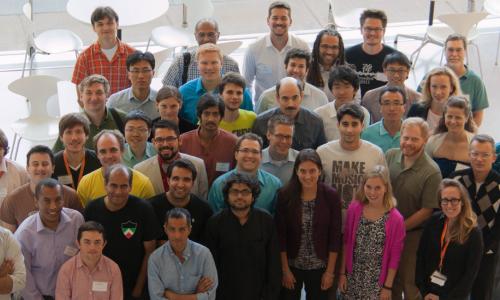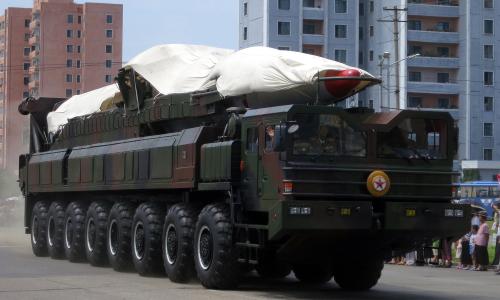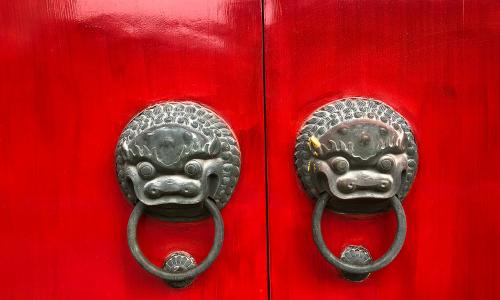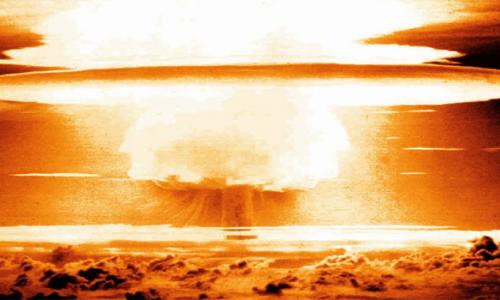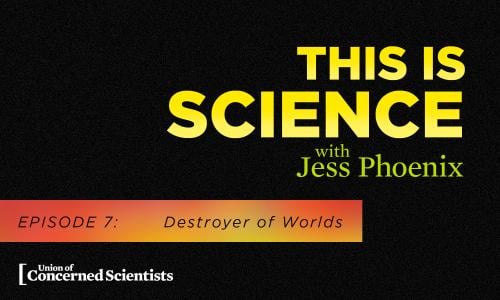The International Summer Symposium on Science and World Affairs encourages the development of young security analysts, researchers, and policy makers.
Since the first meeting in 1989, the symposium has hosted over 500 scientists and researchers in China, Russia, Germany, the United States, and elsewhere.
The symposium aims to encourage and cultivate young scientists working on international security issues, and to expand and diversify the international arms control community.
Past symposiums led to the establishment of the first independent arms control research center in Russia; the first program on peace research and education in Pakistan; and the first university-based security and arms control studies program in China.
Currently, symposiums are being organized by the Princeton School on Science and Global Security.
Career resources
Interested in applying your scientific or technological expertise to arms control problems? Looking for international security jobs or funding?
Click here for funding opportunities related to arms control, international security, nonproliferation, and related issues.
Click here for a list of organizations where technical experts earn their living or spend their spare time working on arms control issues.
History
The first Summer Symposium grew out of discussions between the US physicist Frank von Hippel and the Soviet physicist Roald Sagdaev about the lack of a younger generation of Russian scientists knowledgeable about arms control issues.
The meeting was held for ten days in September 1989 and focused on international security and arms control issues. It was organized by a group of students and faculty at the Moscow Institute of Physics and Technology (MPTI), an elite Soviet technical university. The participants were primarily Soviets and Americans, with smaller delegations from Britain and China.
This first meeting led to the establishment of the Center for Arms Control, Energy, and Environmental Studies at MPTI. This Center is the only university-based program in Russia for teaching and research on technically-related policy issues in the arms control, energy, and environmental fields.
Past symposiums
1989 Moscow Institute of Physics and Technology
1990 Princeton University
1991 Moscow Institute of Physics and Technology
1992 Fudan University, Shanghai
1993 MIT, Boston
1994 Oberwesel, Germany
1995 Kiev, Ukraine
1996 Beijing University of Aeronautics and Astronautics
1997 Cornell University
1998 MIT, Boston
1999 Fudan University, Shanghai
2000 Moscow Institute of Physics and Technology
2001 European Academy Berlin, Germany
2002 University of Illinois, Urbana-Champaign
2003 Moscow Institute of Physics and Technology
2004 Tsinghua University, Beijing, China
2005 Princeton University
2006 Abdus Salam International Centre for Theoretical Physics, Trieste, Italy
2007 Oslo, Norway
2008 Boston, Massachusetts
2009 Fudan University, Shanghai
2010 Hamburg, Germany
2011 London, England
2012 Princeton University
2013 Rome, Italy
2014 Princeton University
2015 Nagasaki, Japan
2017 Hong Kong
2018 Vancouver, British Columbia, Canada
The second Summer Symposium was hosted by the Center for Energy and Environmental Studies at Princeton University in August 1990. At the request of the Russians, the program was expanded to include energy and environmental issues.
In addition, the participants included several researchers from developing countries. Unlike the first meeting, which was organized primarily around lectures by senior participants, this meeting introduced the format used since, in which all participants were expected to give presentations on their research.
The third Summer Symposium, hosted by the newly established Center for Arms Control, Energy, and Environmental Studies at MPTI, was held in June and July of 1991.
There were small Chinese delegations at each of the first three Summer Symposiums and, in August 1991, the Chinese participants offered to host the next meeting in China. A meeting in China was seen as a valuable opportunity to establish contacts with a potential new generation of Chinese public interest scientists, and the 1992 Summer Symposium was held in Shanghai, hosted by the Center for American Studies (CAS) at Fudan University.
Beginning with this Symposium, the Union of Concerned Scientists (UCS) took on a primary role in helping to raise funds and organize the Symposiums.
The fifth Summer Symposium was held at the Massachusetts Institute of Technology in July 1993, and was jointly hosted by MIT's Center for International Studies and UCS. More than 60 researchers, roughly evenly divided between the arms control and energy/environmental fields, took part in the meeting.
As in the previous meetings, the arms control group was composed primarily of researchers from the US, Russia and China. However, the scope of the meeting was broadened by bringing in researchers from India, Pakistan, Ukraine, and Japan. In addition, a number of German researchers were invited in an effort to build connections with the relatively well-established network of arms control researchers in that country.
The enthusiasm of the German participants at the 1993 meeting led to the sixth Summer Symposium being held in Oberwesel, Germany in July 1994. It was co-sponsored by the Interdisciplinary Research Group on Science, Technology and Security (IANUS) at the Technical University of Darmstadt, Germany.
With this Symposium, the focus returned to arms control and security issues and did not include researchers on energy or environmental issues, primarily for logistical reasons, but also to focus discussions on security.
The seventh Summer Symposium was held in 1995 in Kiev, Ukraine. The local organizer was Sergey Yatskevitch, a Ukrainian physicist who had attended two of the previous meetings.
The 1996 Summer Symposium was held in Beijing, China, hosted by the Beijing University of Aeronautics and Astronautics, with the objective of broadening contacts between the international technical community and the growing Chinese community of researchers interested in arms control and security issues. It also played an important function of helping to create a community of the Chinese researchers, most of whom were unaware of others working on similar issues.
Since then the Symposium has been held in numerous international locations, and included particpants from across the globe. You can view recent webinars and lectures here.
